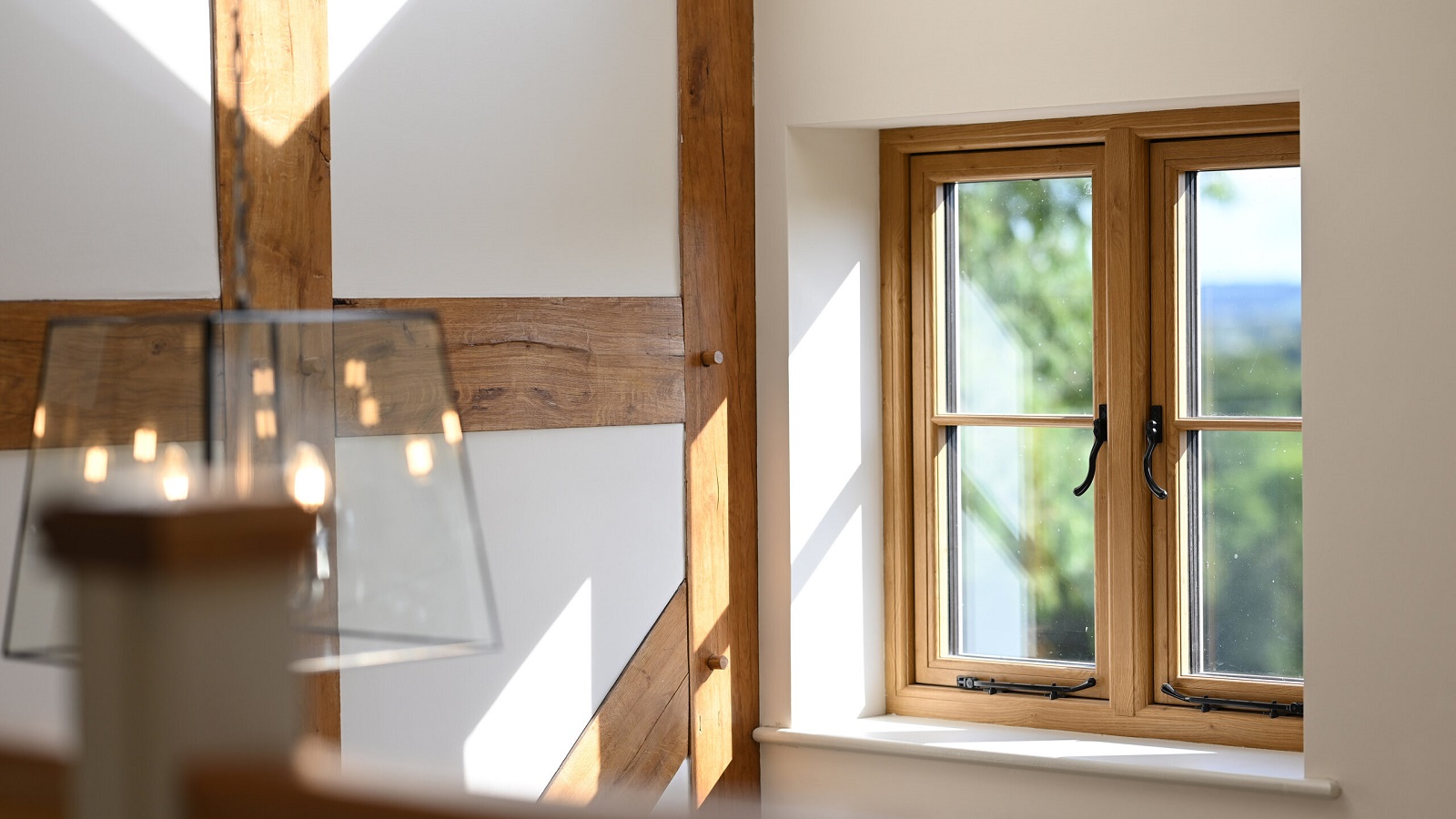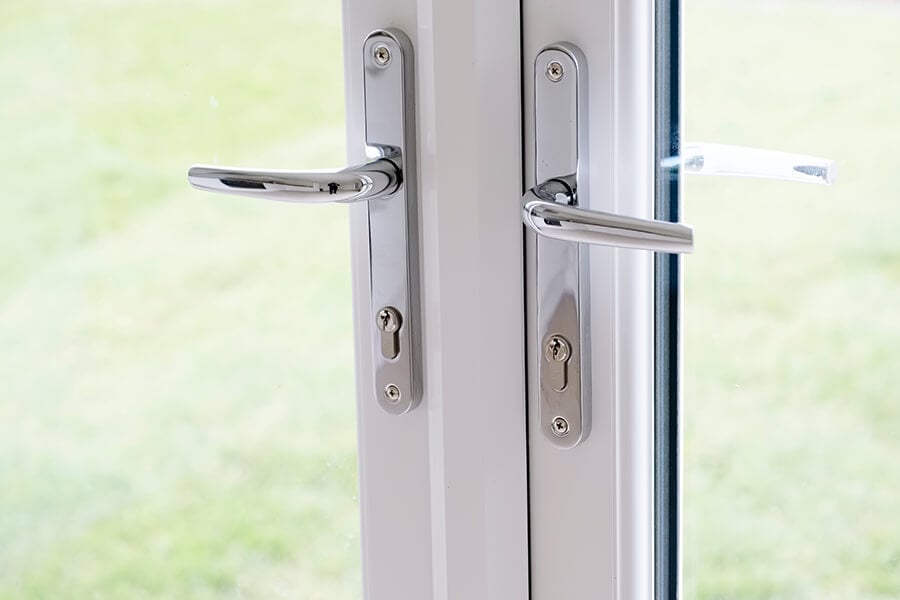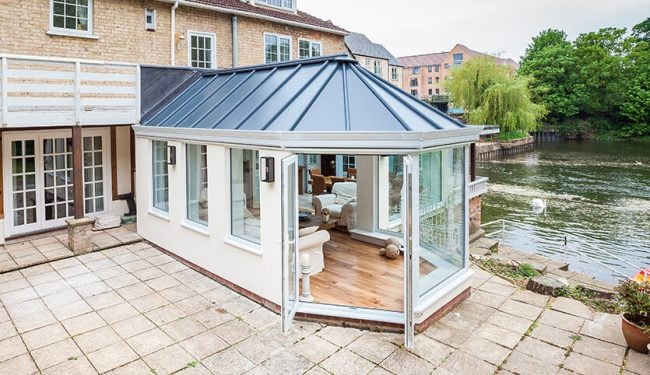
U-values, also known as thermal transmittance, are a measure of how much heat passes through each building element and how easily heat can pass through a material. For windows, doors and conservatory roofs the U-Value indicates how easily heat flows through them. A lower U-value signifies better thermal insulation, meaning less heat escapes in winter and less heat enters in summer, leading to improved energy efficiency.
How are U-values calculated?
U-values are calculated by dividing the temperature difference between the inside and outside of a structure by the rate of heat transfer through the material. The unit of measurement for U-values is watts per square metre per Kelvin (W/m²K).
What is the minimum U-value for UK building regulations?
By law, window manufacturers in England and Wales must demonstrate that their windows comply with the latest energy efficiency requirements, which is usually done by declaring the windows’ U-value. U-values for windows and doors must meet a minimum criteria, as stated by the latest building regulations.
In the UK, the minimum U-value for windows and doors to achieve is 1.4W/m2K (or Window Energy Rating B) for existing dwellings to ensure that they meet specific energy efficiency standards to help reduce heat loss, lower energy consumption, and improve overall building performance in terms of insulation and sustainability.
The Future Homes Standard, which is expected to come into force in 2025, will require even better thermal performance, with the minimum U-Value tightened further from previous regulations.
Window U-values
There are two different U-values for windows. The Ug (glazing U-value) measures the thermal insulation solely of the glass (centre pane) in the window. The Uw (whole window U-value) evaluates the entire window unit, including the glass, frame, seals, and spacer bar.
The glass pane on its own will always be lower than the whole window as the thickness of the material of the frame, the seals, and the spacer bar typically have higher heat transfer rates compared to the glass, contributing to a higher overall U-value for the entire window.
material’s thickness, material’s ability,
There are a number of factors that affect a window U-value:
The glass type:
Low-e coatings, lamination, and various glass types can significantly impact U-value.
Gas filling:
Argon gas, used between the panes, can improve insulation compared to air.
Glass pane spacing:
A wider space between panes generally enhances insulation.
Spacer bar:
The material and thermal properties of the spacer bar play a role.
Frame material:
The thermal conductivity of the material will be different depending on the frame.
The number of glass panes:
Double-glazed windows offer better insulation than single-glazed, while triple-glazed windows can achieve U-values below 1 W/m²K.

Why are U-values important?
With energy prices rising, thermal measures such as U-values are crucial for windows, doors and conservatory roofs for several reasons:
Energy efficiency:
Lower U-values mean better insulation and not as much heat loss from a room leading to reduced energy consumption for heating and cooling your home. This translates to total energy use being less, lower energy bills and less carbon emissions for a smaller carbon footprint.
Comfort:
Maintaining consistent temperatures throughout the year contributes to increased comfort and a better standard of living in your home.
Condensation prevention:
Lower U-values help reduce the risk of condensation and mould on windows and doors, preventing damage to the surrounding areas and promoting a healthier indoor environment.
What is the ideal U-value?
The ideal U-value for a window on a home or a building can vary depending on several factors, including:
Building regulations:
Building regulations in the UK set minimum u value requirements for new windows and doors and it is currently set at 1.4W/m2K.
Location:
Colder climates require lower U-values for better insulation and a better flow of heat.
Window size:
A larger window with a higher proportion of glass will have a lower overall heat loss ratio compared to a smaller window with a higher frame-to-glass ratio.
Personal preferences:
You may choose a lower U-value for improved comfort, average temperature or energy savings.
FineLine Energy Efficient Windows
Our windows are available with high-performance glazing that meet and exceed building regulations.
Double Glazing:
Our EcoMAX double glazing is not only the most sustainable and eco-friendly glass unit on the market, but it also performs on par with typical A-rated windows.
Comfort Glass:
Our advanced Comfort Glass features Low Emissivity Glass (Low-E) and argon gas for glass that is more energy efficient than double or triple glazing.
FineLine and U-Values
Understanding U-values allows you to make informed decisions about your home improvements, contributing to a more energy-efficient, comfortable, and sustainable living space. At FineLine, we offer a wide range of windows, doors, and conservatory roofs with excellent U-values to prioritise your comfort and energy savings. Our advanced multi-chambered uPVC frames achieve U-values of 1.2W/m2K, while our advanced thermally broken aluminium profiles achieve U-values of 1.3 W/m2K. We can help you choose the right products based on your specific needs and budget.























